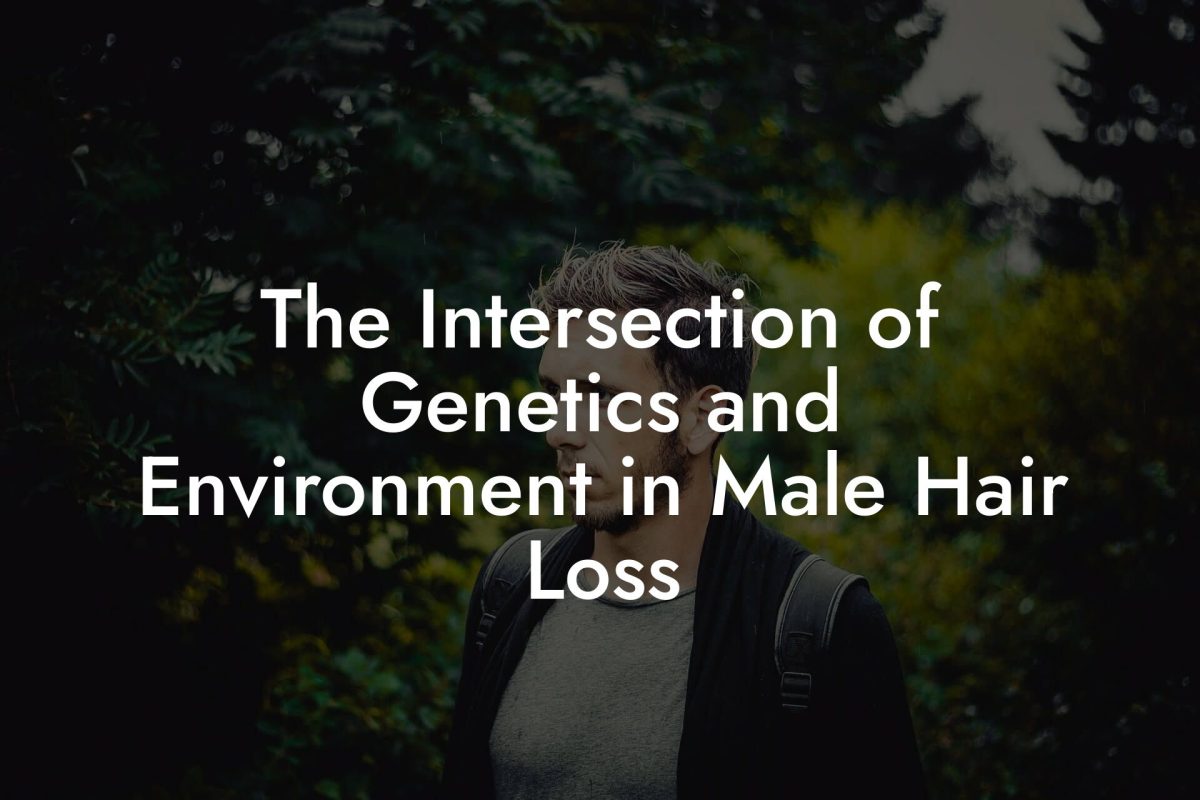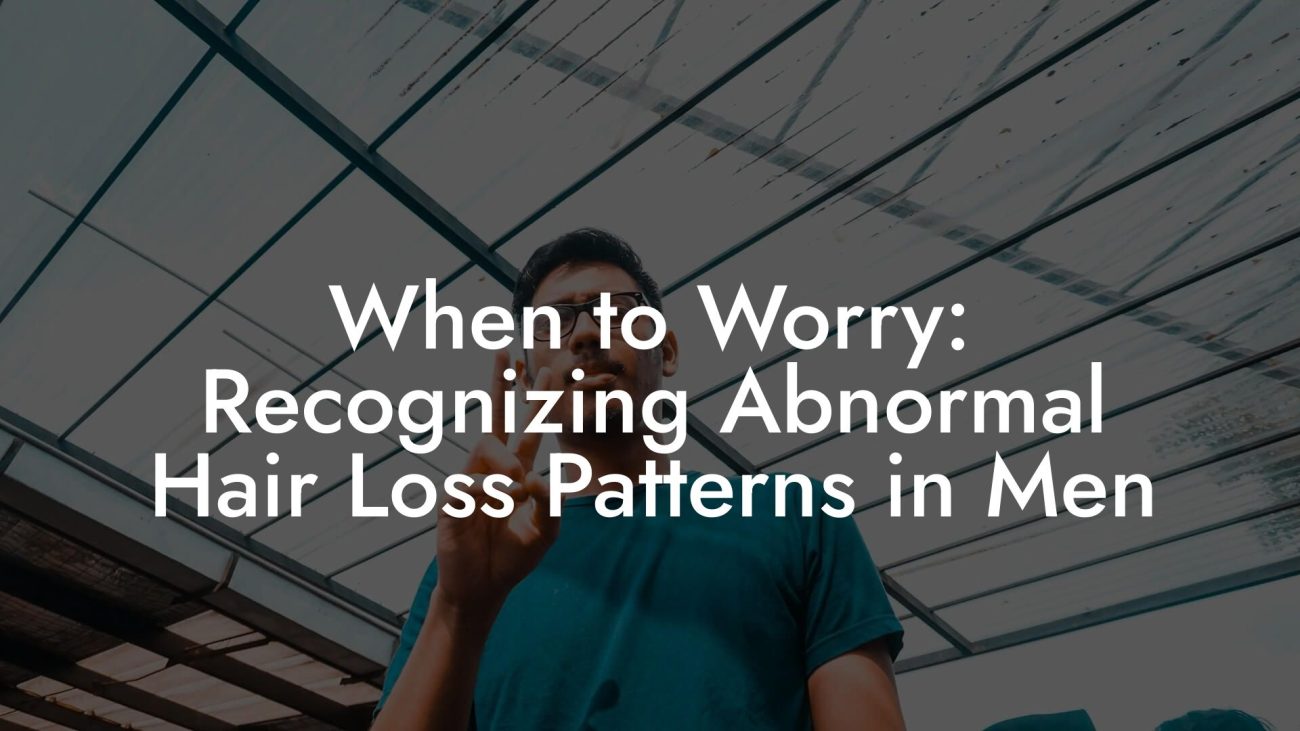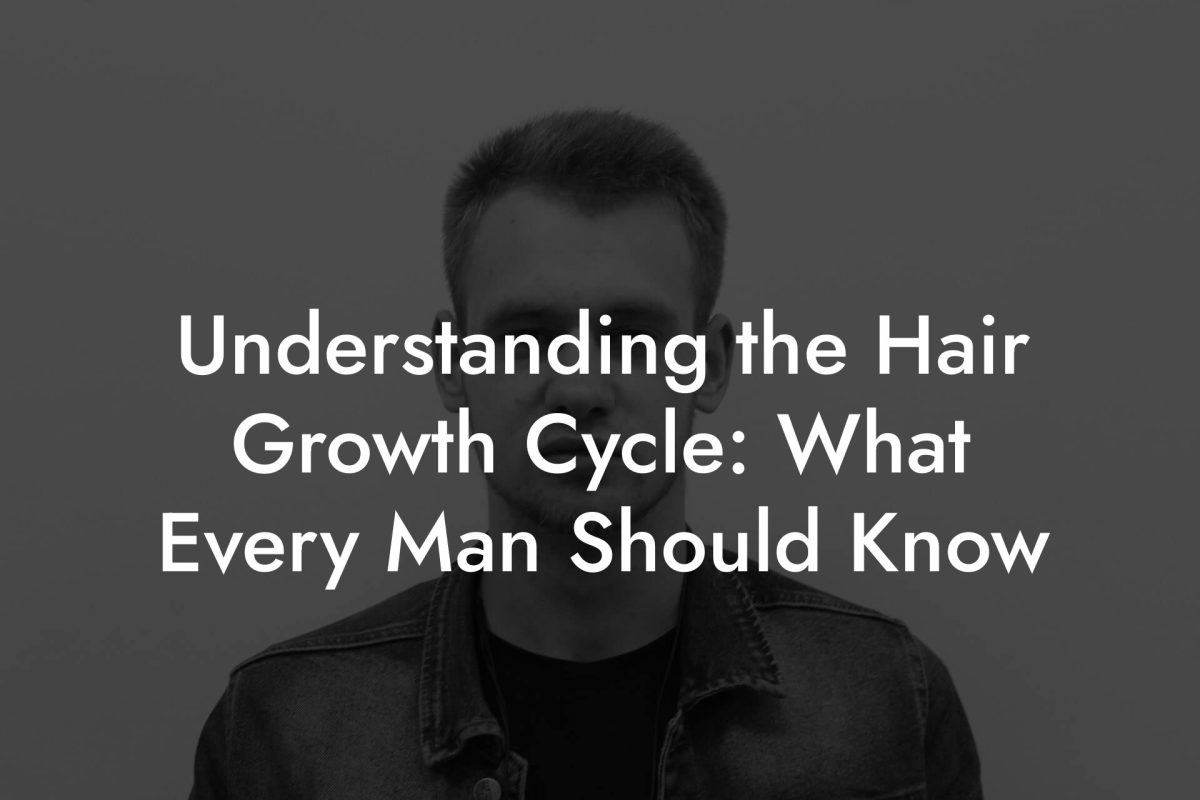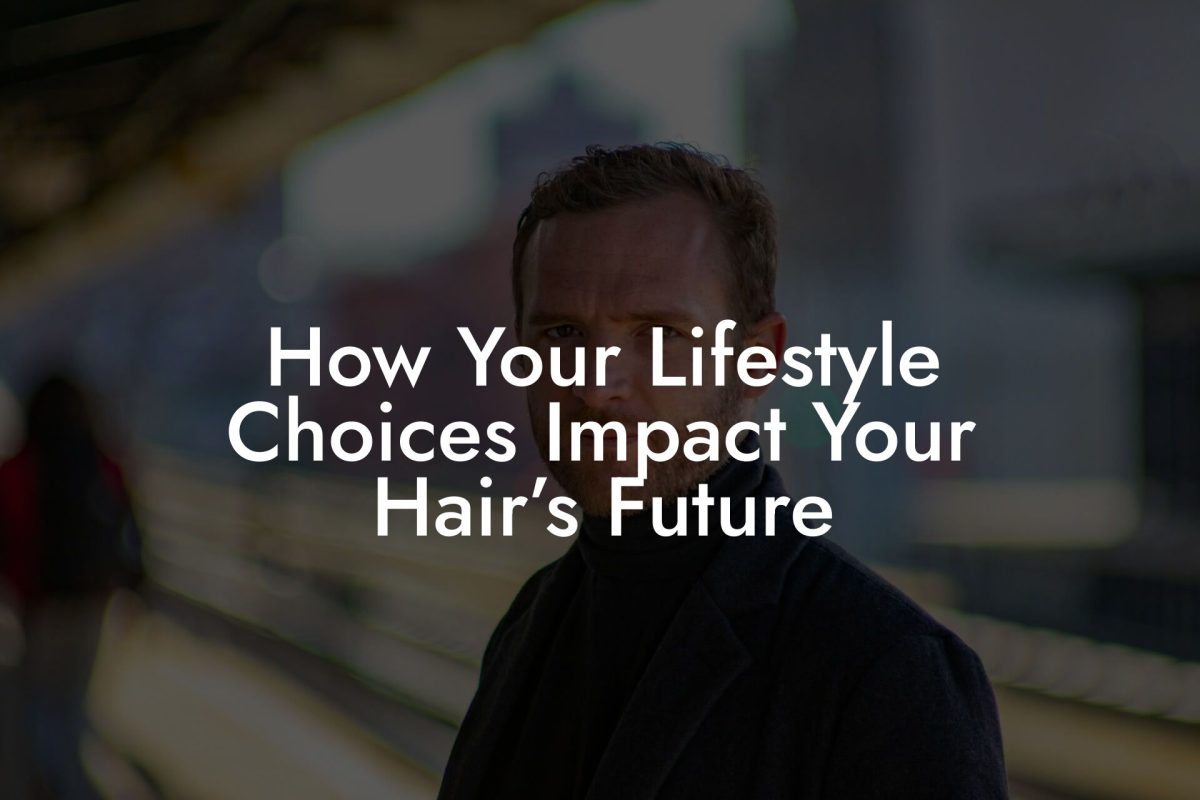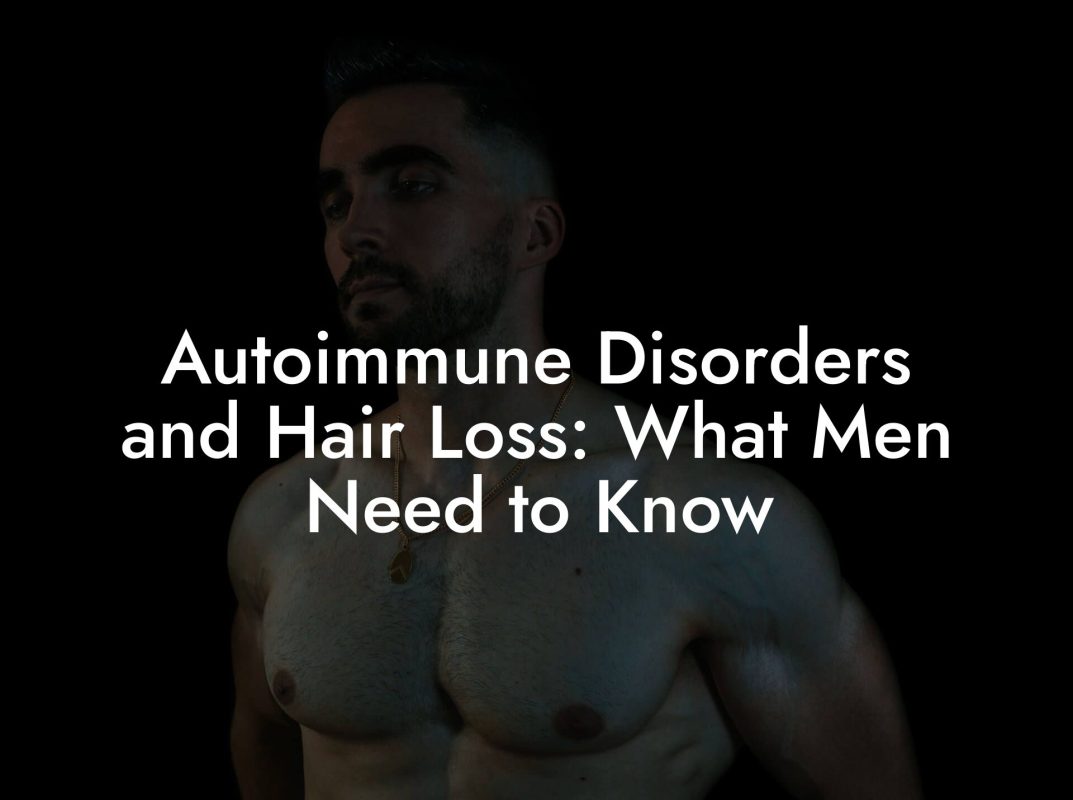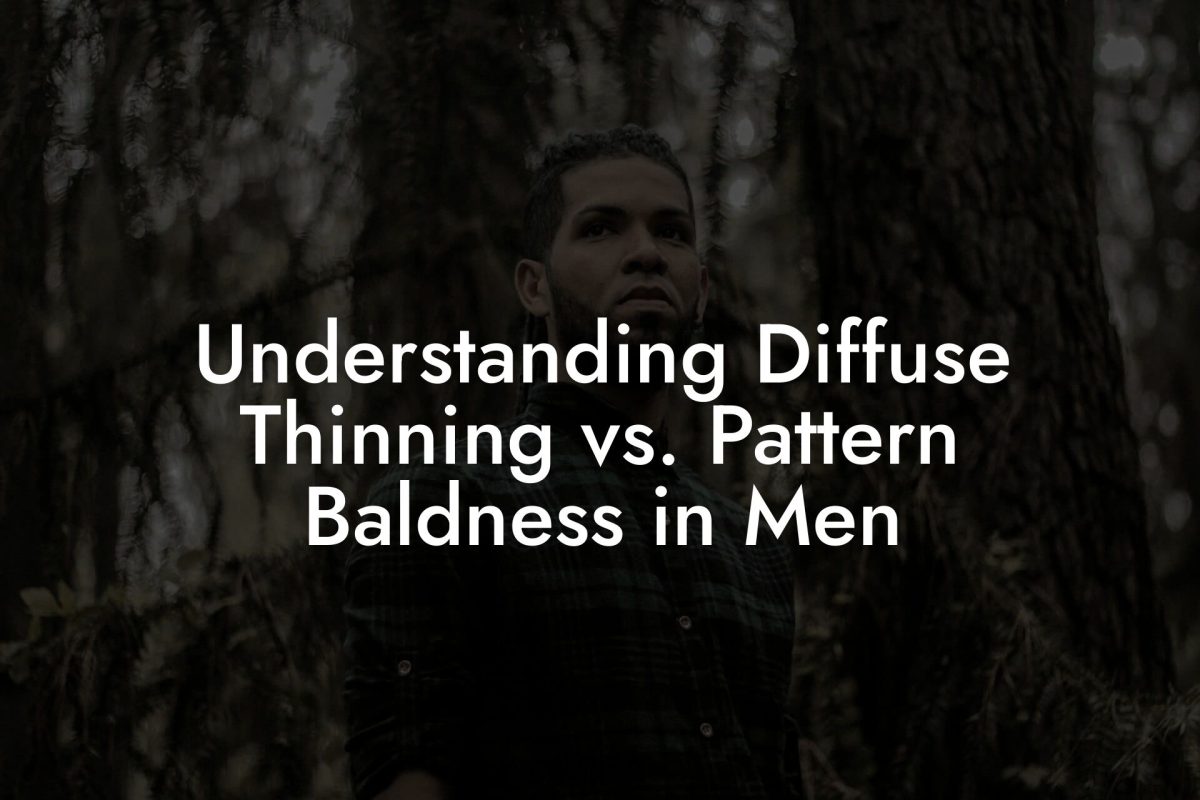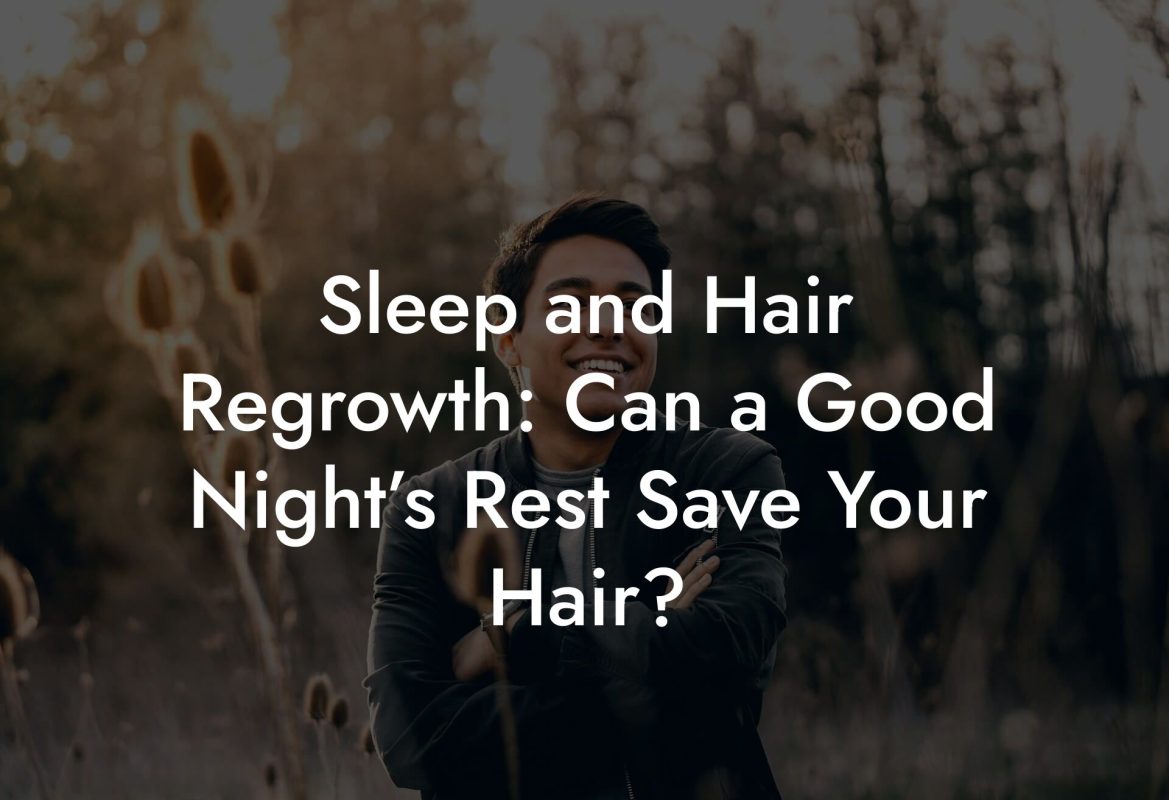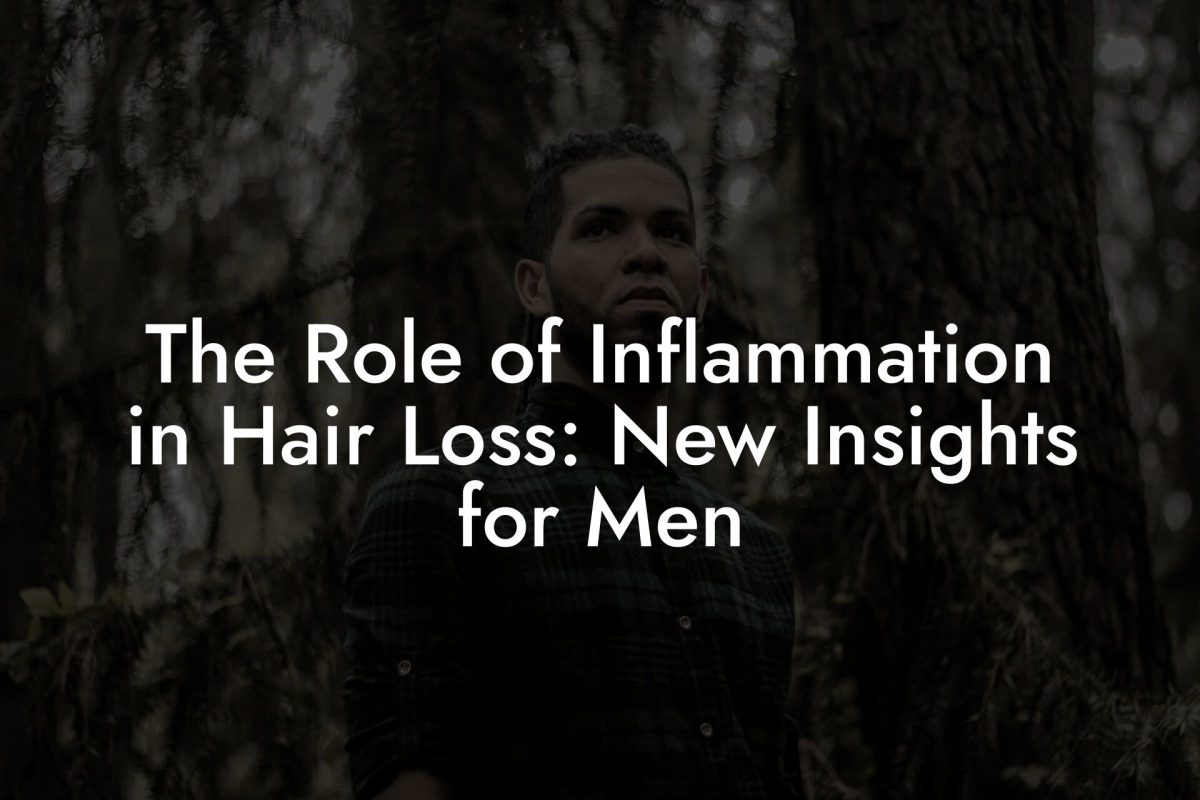Hair Loss Library
Decoding Androgenetic Alopecia: What Every Man Needs to Know

Hey gents, ever caught a glimpse of your reflection and thought, “Whoa, is that a new hair trend or am I losing my mane?” If you’re a millennial or Gen Zer navigating the quirky labyrinth of modern manhood, welcome to our down-to-earth, humor-laced guide on androgenetic alopecia. At Mane Matrix, we decode men’s hair loss without all the awkward, expensive, and outdated medical jargon. Buckle up for a ride into the science, the myths, the treatments, and the lifestyle hacks that every modern dude needs to know.
Decoding Androgenetic Alopecia: What’s the Deal?
Androgenetic alopecia—yes, try saying that three times fast—is the fancy medical term for male pattern baldness. But let’s ditch the medical mumbo jumbo for a minute and get straight to the meat of the matter: this condition is the genetic, hormonally driven hair loss that many men experience as they journey from freshly shaven in their twenties to rocking the “I’m too cool for a comb” look in their thirties, forties, and beyond.
Contrary to popular belief, losing hair doesn’t mean your best days are over—it just means you might need to switch up your style a bit. Think of it as Mother Nature’s way of nudging you to explore new trends, from slick buzz cuts to epic beards. But before you throw in the towel (or the comb), let’s take a deeper dive into what androgenetic alopecia truly is and why it happens.
The Science Behind the Shedding: How Your Genes and Hormones Play a Role
At the crux of androgenetic alopecia lies a potent mix of genetics and hormones. Researchers have discovered that this type of hair loss follows a hereditary pattern—if your dad, granddad, or that one cool uncle had a receding hairline, chances are you might be on the same ride. And while genetics cast the lucky (or not-so-lucky) lot in the starting lineup, hormones run the show.
Specifically, dihydrotestosterone (DHT)—a derivative of the male hormone testosterone—binds to your hair follicles, causing them to shrink over time. As these follicles miniaturize, your hair becomes thinner, lighter, and eventually stops growing altogether. This isn’t an overnight switch; it’s a gradual process that can start subtly in your early twenties and advance over decades.
In simpler terms, think of DHT as that one party guest who overstays their welcome, slowly cramping the style of your once-thick hair. The more your follicles are exposed to DHT, the sooner they might decide to call it quits. But fear not, because understanding the enemy is the first step in mounting a counterattack.
Mastering the Mane: Myths vs. Reality
Let’s bust some myths while we’re at it. There’s a lot of misinformation swirling around androgenetic alopecia, and it’s time we clear the fog:
- Myth #1: Only older dudes lose hair. Truth? Hair loss can start in your twenties or thirties too. It’s not a “senior moment” reserved for the golden years.
- Myth #2: Wearing hats causes baldness. Unless you're channeling your inner solar panel, a hat won’t zap your hair away. It’s more about genetics and hormones than headwear.
- Myth #3: There’s a magic pill that stops hair loss overnight. While there are effective treatments out there, there’s no one-size-fits-all potion. It’s all about managing the process, not suddenly regrowing the hair of your youth.
- Myth #4: It’s all downhill after the first sign of hair loss. Embrace it as a transformation rather than a catastrophe. More and more men are rocking the bald and confident look, and you could be next.
The reality is nuanced. Androgenetic alopecia isn’t a signal that your best self is behind you; it’s a natural, albeit frustrating, part of many men’s lives. With the right approach, you can take control of the situation—whether that means embracing your baldness, exploring treatment options, or fine-tuning your style.
Spotting the Signs Early: What to Look For
Early detection is key to managing androgenetic alopecia. If you start noticing thinning along your crown or a receding hairline, don’t panic—just take note. Here’s what to keep an eye on:
- Gradual Thinning: Unlike sudden hair loss conditions, androgenetic alopecia is typically slow and gradual. It’s like watching a TV series that slowly unfolds over seasons.
- A Receding Hairline: A classic sign that often starts with the temples and progresses backward.
- Loss of Hair Density: Your once-thick mane may start showing signs of density reduction, particularly on top.
- Increased Shedding: Noticing more hair in your shower drain or on your pillow can be an early indicator.
By paying attention to these signs, you can make informed decisions about your next steps—whether that involves consulting a specialist or trying out some at-home remedies.
Treatment Options: Navigating the World of Hair Loss Solutions
Once you’ve acknowledged that hair loss is part of your journey, the next step is exploring your treatment options. There’s no “one pill fixes all” solution, but there are several effective avenues you can take:
1. Over-the-Counter Magic: Minoxidil
Minoxidil is a topical solution that has been shown to slow down hair loss and even foster some regrowth in many men. Applied directly to the scalp, it works by improving blood flow and revving up the hair follicles. It’s not a miracle cure, but it’s a solid option if you’re looking for something non-invasive to start with.
2. Prescription Power: Finasteride
For those seeking a more robust intervention, finasteride is an oral prescription medication that targets DHT production. By lowering DHT levels, it helps to slow hair loss and may even reclaim some lost hair over time. However, as with any medication, it’s important to discuss potential side effects with a healthcare provider.
3. Low-Level Laser Therapy (LLLT)
Enter the realm of high-tech hair restoration. Low-level laser devices are designed to stimulate hair follicles and promote healthier growth. These devices, available as combs, helmets, or caps, are a hit among tech-savvy dudes who love gadgets as much as they love their style.
4. Platelet-Rich Plasma (PRP) Treatments
PRP therapy involves drawing a small amount of your blood, processing it to concentrate the platelets, and then injecting it back into your scalp. This treatment can jumpstart your hair follicles and is gaining traction as a natural and effective approach to combating hair loss.
5. Hair Transplant Surgery
For those ready for a more permanent solution, hair transplant surgery involves relocating hair follicles from one part of your scalp (usually thicker areas) to the thinning regions. Advances in surgical techniques have made this option more accessible and natural-looking than ever before.
These treatment options provide a spectrum of choices that cater to different needs and lifestyles. Whether you’re a DIY enthusiast trying over-the-counter solutions or you're considering a visit to a specialist for advanced treatments, there’s a pathway for every man navigating the hair loss maze.
Beyond Meds: Lifestyle and Natural Approaches to Support Hair Health
Sure, medications and medical procedures are important, but don’t underestimate the power of lifestyle tweaks and natural remedies in supporting hair health. Here are some practical, no-nonsense ways to keep your scalp in prime condition:
Nutrition: Feed Your Follicles
What you eat plays a huge role in overall hair health. A nutrient-rich diet can supply your body with vitamins, minerals, and antioxidants that are vital for stimulating hair growth and preventing further loss. Think of it as premium fuel for your follicles.
- Protein Power: Hair is mostly protein, so include lean meats, beans, and nuts in your diet.
- Iron & Zinc: These trace minerals help strengthen hair; foods like spinach, lentils, and oysters are great sources.
- Vitamin-Rich Foods: Vitamins A, C, D, and E support scalp health. B-vitamins, especially biotin, are also essential.
- Omega-3 Fatty Acids: Found in fatty fish, walnuts, and flaxseeds, these healthy fats boost scalp circulation.
Scalp Care: More Than Just Shampoo
Taking care of your scalp is just as important as what you put on your plate. Regular gentle massages not only help relieve stress but also increase blood flow to your follicles. Consider a cleansing routine that avoids harsh chemicals, opting instead for natural, sulfate-free shampoos and conditioners. And hey, maybe treat yourself to an occasional scalp mask—because every dude deserves a little luxury.
Stress Management: Chill, Bro
Let’s face it: the modern hustle can leave you frazzled. And yes, stress is known to exacerbate hair loss conditions. Incorporate practices like meditation, deep breathing, or even a quick workout to reduce stress levels. When you’re relaxed, your body is more likely to allocate resources toward maintaining healthy hair.
Sleep: Beauty Rest Isn’t Just a Myth
Getting quality sleep is essential for overall well-being, including hair regeneration. Aim for 7-9 hours per night to allow your body time to repair and rebalance its systems. A well-rested body is better equipped to manage stress and promote hair growth.
Embracing these lifestyle changes isn’t about making drastic overhauls overnight—it’s about small, sustainable tweaks that add up to big results over time.
Mental Health and Emotional Well-Being: Confidence Beyond the Comb
There’s a lot more to this story than just hair. Losing your mane can feel like a blow to your identity, but it’s also an opportunity to redefine what attractiveness means. As you navigate androgenetic alopecia, remember that your worth isn’t measured by the density of your hair.
Embracing emotional well-being is critical. Connect with friends, family, or support groups where you can share experiences and advice. Explore hobbies, dive into new interests, and focus on cultivating confidence in all areas of your life. When you accept yourself fully—even if your hairline is receding—you radiate a kind of cool confidence that no amount of hair can substitute.
Whether you decide to treat the condition medically or embrace the balding trend with style, it’s vital to maintain a positive, well-rounded mindset. Your journey might have its ups and downs, but every step is part of the larger picture of who you are.
The Role of Technology in Modern Hair Restoration
Welcome to the era where science meets everyday cool. From apps that track your hair loss progress to innovative laser and PRP treatments, technology is stepping up the game in modern hair restoration. Many of today’s treatments incorporate high-tech devices that monitor and stimulate hair growth, ensuring you’re not in the dark about the progress you’re making.
For instance, handy smartphone apps let you snap a quick pic of your hairline each week to document changes. Coupled with wearable low-level laser therapy (LLLT) devices, you're in control of a personalized, cutting-edge regimen directly at home. It’s like having a personal trainer for your scalp—tech-savvy and results-driven!
As more men embrace a proactive approach to hair health, technology continues to report breakthrough studies and new methods that get you closer to your best look. So, stay informed, experiment with what fits your lifestyle, and be prepared for more high-tech innovations on the horizon.
Resources and Community Support: Your Next Steps
At Mane Matrix, we believe that the journey toward understanding and managing androgenetic alopecia isn’t one you have to walk alone. Whether you’re looking for practical advice, friendly community chats, or expert analysis on the latest hair loss treatments, there’s a wealth of resources waiting for you.
Start by exploring reputable blogs, YouTube channels, and forums dedicated to men’s hair health. Many of these platforms offer firsthand stories, product reviews, and before-and-after transformations from men who have walked the same path you’re on. Look for communities on social media where contemporary tips and breakthroughs are shared regularly.
Additionally, consider reaching out to online experts for virtual consultations or joining webinars that break down the science behind androgenetic alopecia in an easy-to-digest way. These resources aren’t just about treatments—they’re about empowering you with knowledge and support, helping you embrace the changes with confidence and style.
Remember, every man’s journey is unique. Whether you opt for a low-key maintenance routine or decide to dive into innovative treatments, draw inspiration from those who have shared their successes and setbacks. In our interconnected digital age, community support is just a click away—so plug in, learn, and connect!
Case Studies: Real Men, Real Mane Transformations
Nothing illustrates the impact of understanding androgenetic alopecia like real-life stories from men who’ve been there, done that, and rocked their look regardless. Let’s take a look at a few case studies that shed light on the diverse paths to hair confidence.
Case Study 1: Embracing the Silver Lining
Meet Alex, a 31-year-old entrepreneur who started noticing his hair thinning at the crown. Initially, the idea of losing his luscious locks had him in a tailspin, but after a deep dive into the science of DHT and a consult with a specialist, he opted for a mix of minoxidil and lifestyle changes. Alex began nourishing his body with a balanced diet, embraced stress-relieving activities like cycling, and even experimented with low-level laser therapy at home.
Over the course of a year, Alex experienced a noticeable slowdown in hair loss and even saw small areas of regrowth. More importantly, he learned to appreciate his evolving look, ultimately deciding to shave his head and rock a confident, streamlined style that perfectly fits his entrepreneurial vibe.
Case Study 2: High-Tech Hair Revival
Then there’s Marcus, a 27-year-old digital native who wasn’t about to let hair loss slow down his social media game. With a flair for technology, Marcus dove headfirst into the world of hair restoration apps and wearable low-level laser devices. Constantly tracking his progress through weekly selfies, he paired his tech regimen with a prescription for finasteride after careful research and consultation.
Within months, Marcus not only slowed the progression of androgenetic alopecia but also shared his journey online, inspiring other men to explore innovative treatments. His blend of science, tech, and a touch of style has since turned him into a go-to resource for his followers, proving that modern solutions and a confident attitude can transform the experience of hair loss.
Case Study 3: The Lifestyle Overhaul
Lastly, we have Daniel, a 35-year-old fitness buff who initially shrugged off early signs of hair thinning as a minor inconvenience. However, once the signs became undeniable, Daniel decided to take a holistic approach—integrating balanced nutrition, targeted supplements, mindful relaxation techniques, and regular scalp massages into his routine. Working closely with both a nutritionist and a dermatologist, he saw steady improvement and learned the art of adapting his hair care regimen in tandem with his overall lifestyle.
Today, Daniel sports a look that accentuates not just his physique but also his mature, confident vibe. His journey underscores the importance of viewing hair loss as part of a broader lifestyle narrative—one where precision, commitment, and self-love pave the way for lasting change.
Creating a Customized Game Plan for Your Hair Journey
So, you’ve taken your first steps toward demystifying androgenetic alopecia. What’s next? Crafting a game plan that suits your unique style, goals, and lifestyle. Here’s how you can create your own personalized roadmap:
Step 1: Self-Assessment and Research
Begin by taking a good, hard look at your hair, noting areas of thinning and receding. Combine this with some research to understand your family’s hair loss history. With a clear picture of your current status, you’ll be better prepared to decide whether to start with over-the-counter treatments or consult a specialist.
Step 2: Explore Your Options
With the basics under your belt, dive into the spectrum of treatment options—from topical applications like minoxidil to more advanced approaches like PRP therapy. Remember, it’s not about chasing a miracle cure, but about finding the solution that fits your life style and comfort level.
Step 3: Consult with Experts
While the internet is a treasure trove of information, nothing compares to professional insight. Reach out to hair restoration specialists or dermatologists who can help tailor a treatment plan just for you. Many experts offer virtual consultations, making it easier than ever to get advice without the awkward in-person visits.
Step 4: Set Realistic Goals and Benchmarks
Establish clear, achievable objectives. Are you looking to slow the process, stimulate any possible regrowth, or completely embrace a bald look with style? By setting measurable goals, you can track progress and tweak your regimen for the best possible results.
Step 5: Monitor, Adjust, and Celebrate Wins
Whether it’s a subtle change in the density of your hair or a newfound confidence in your look, celebrate every milestone. Use digital tools to monitor your progress, and don’t be afraid to adjust your routine as needed. Remember, this journey is as much about personal growth as it is about hair.
Crafting a personalized plan isn’t a one-and-done deal; it evolves as you do. Every new discovery, every tweak to your diet or scalp care routine, and every tech tool you add to your arsenal is a step toward reclaiming your confidence.
Integrating Holistic Self-Care Into Your Hair Health Routine
Let’s not forget the bigger picture: your overall well-being. A holistic approach to hair health doesn’t just focus on treatments; it supports your entire lifestyle. Whether it’s building a balanced diet, nailing a stress management routine, or finding time for the hobbies that lift your spirits, every aspect of self-care contributes to better hair health.
Think of your hair as the cherry on top of an already vibrant, well-cultivated life. By nurturing your general health, you’re not only giving your follicles a fighting chance but also ensuring that you feel great inside and out. And that, my friend, is the real secret to looking and feeling like a million bucks.
FAQs: Your Androgenetic Alopecia Questions Answered
We’ve gathered some of the most common questions about androgenetic alopecia that you might be wondering about. Check them out below:
1. What exactly is androgenetic alopecia?
It’s the clinical term for male-pattern baldness, a genetically determined process where hair follicles gradually shrink due to the influence of DHT.
2. Is hair loss inevitable if it runs in my family?
Genetics plays a strong role, but environmental factors, stress, and lifestyle choices can also influence the rate and pattern of hair loss.
3. Can I reverse hair loss completely?
While some treatments can significantly slow down the process and even promote partial regrowth, there isn’t yet a one-size-fits-all cure for androgenetic alopecia.
4. How effective is minoxidil for me?
Minoxidil can be effective for many men in slowing hair loss and promoting some regrowth, especially if started early. Consistency is key!
5. What are the potential side effects of finasteride?
Finasteride may cause side effects in some men, such as decreased libido or mood changes. Discuss these with your healthcare provider to determine if it’s right for you.
6. Are natural remedies worth trying?
Natural approaches like a balanced diet, scalp massages, and stress management can support overall hair health, though they may not produce dramatic results on their own.
7. How soon will I see changes once I start treatment?
It varies from person to person, but most treatments require several months to show noticeable changes. Patience and consistency are your best friends here.
8. Can lifestyle changes really make a difference?
Absolutely! A nutrient-rich diet, regular exercise, and effective stress management can complement medical treatments and support your overall hair health.
9. Is it possible to maintain a natural look while managing hair loss?
Yes. Many men successfully integrate treatments and lifestyle changes while embracing a natural look—sometimes even opting for a deliberate, stylish shave.
10. How can I stay updated on the latest hair restoration techniques?
Following reputable sources like Mane Matrix and trusted hair health experts online is a great way to stay informed about new treatments and technologies.
Your Journey to Confidence and a Rock-Solid Mane
Wrapping it all up, losing your hair might feel like a plot twist in your personal story, but it’s far from the end of the narrative. It’s an invitation to redefine your style, boost your confidence, and discover a whole new version of yourself. With advances in technology, a deeper understanding of the condition, and a plethora of treatment options, you’re in the driver’s seat of your hair journey.
At Mane Matrix, we’re all about delivering expert analysis without the pretense. We understand that as a modern man, you crave authenticity—solutions that are practical, backed by science, and tailored to your lifestyle. Whether you decide to experiment with high-tech treatments, opt for a natural route, or simply embrace the gradual change with a newfound swagger, your approach should fit you like your favorite pair of jeans.
Remember, every receding hairline or thinning patch is just one chapter in your life story. A well-crafted plan, a positive mindset, and a strong support system can transform this challenge into an opportunity for reinvention. So here’s to taking charge of your destiny, rocking your unique style, and proving that confidence is always in style.
Step into this next chapter with boldness, humor, and a relentless drive to become the best version of yourself—hair or no hair. After all, true style comes from the courage to be authentically you, no matter what the mirror says.
If you loved this article... Dive deeper into the world of mens hair loss with our most popular sections. If there is anything you think is missing or anything you would love for us to write about, just give us a shout.
Why Am I Losing Hair? Unpacking the Science Behind Men’s Hair Loss
The Ultimate Guide to Male Pattern Baldness: Causes and Clues
Hormones & Hair: How Testosterone Impacts Hair Loss in Men
Genetics vs. Lifestyle: What’s Really Causing Your Hair Loss?
Stress and Strands: Exploring the Link Between Anxiety and Hair Loss
Decoding Androgenetic Alopecia: What Every Man Needs to Know
How Aging Affects Your Hair: Understanding the Natural Process
The Role of Diet in Hair Health: Nutrients That Prevent Hair Loss
Environmental Factors: How Pollution and Toxins Trigger Hair Loss
Medical Conditions and Hair Loss: What’s Normal and What’s Not?
The Impact of Medications on Men’s Hair: What You Should Ask Your Doctor
Unraveling Scalp Health: Signs Your Scalp Needs Extra Care
Hair Loss Myths Busted: Separating Fact from Fiction
The Role of Inflammation in Hair Loss: New Insights for Men
Sleep and Hair Regrowth: Can a Good Night’s Rest Save Your Hair?
How Smoking and Alcohol Affect Men’s Hair: A Deep Dive
Understanding Diffuse Thinning vs. Pattern Baldness in Men
Innovative Research: The Future of Hair Loss Studies for Men
Spotting Early Signs: How to Identify Hair Loss Before It’s Too Late
Autoimmune Disorders and Hair Loss: What Men Need to Know
The Science Behind Hair Follicle Miniaturization Explained
How Your Lifestyle Choices Impact Your Hair’s Future
Understanding the Hair Growth Cycle: What Every Man Should Know
When to Worry: Recognizing Abnormal Hair Loss Patterns in Men
The Intersection of Genetics and Environment in Male Hair Loss





